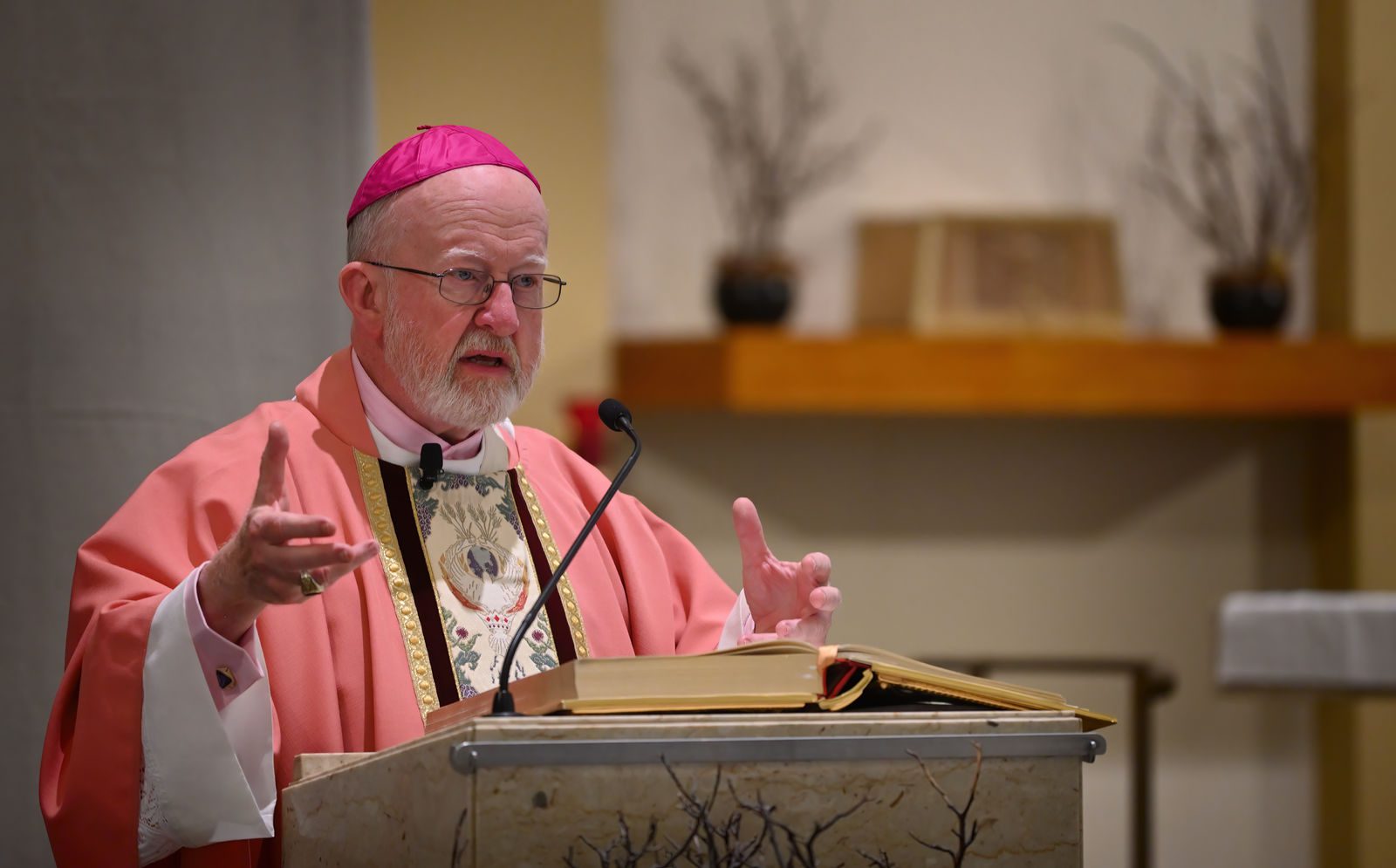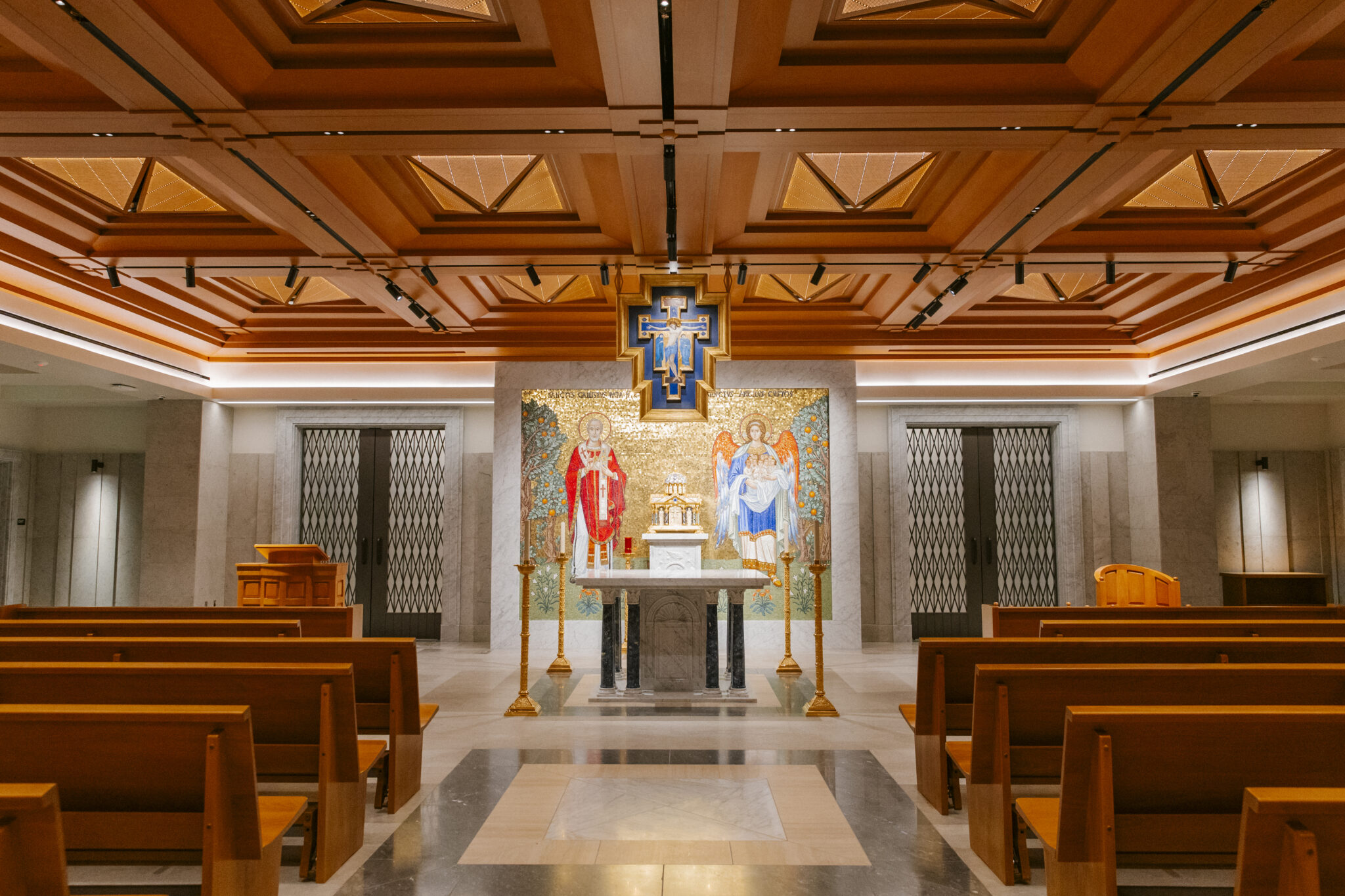Christ Cathedral Phase-one Design Plan Revealed During 40th Anniversary Celebration
Garden Grove, Calif., (Sep. 19, 2016) – The Catholic Diocese of Orange unveiled cathedral design plans during a day-long anniversary celebration marking 40 years of diocesan growth. An estimated 5,000 participated in a series of activities highlighted by an outdoor Mass. The former Crystal Cathedral was acquired by the Diocese in 2011 and requires significant restoration and upgrades before general public use can begin and the eventual celebration of Catholic rites. The Most Rev. Kevin Vann was appointed Bishop of Orange shortly after the cathedral and its adjoining 34 acre campus was acquired. He has become the project’s driving force by aggressively soliciting input from diocesan priests, laity and a wide spectrum of experts and together has shaped a new cathedral design. «It is our intention to dedicate Christ Cathedral in 2019 and to have exhibited fiscal responsibility at every level when bringing this immense project forward. Some restorative and upgrade changes to the cathedral’s integral structure have already been completed; now comes the exciting and engaging challenge of creating a beautiful and functional Catholic interior design. This process formally began with the sharing of our vision with those attending the 40th anniversary celebration,» said Bishop Vann. Principal architect Scott Johnson, FAIA, Johnson/Fain Associates has crafted an innovative interior layout that will ensure liturgical compliance merged with what might be called ‘transcendent beauty.’ The application of unexpected building materials and their artful combination will grace the cathedral’s interior Worship Space. The iconic building’s recognizable exterior shell of more than twelve thousand panes of glass will remain, but is currently undergoing significant repair and reconditioning. «It was unimaginable to consider any significant change to Philip Johnson’s exterior design. Our focus and challenge has been to respect the building’s design integrity and its spiritual legacy while re-interpreting and expanding the space for Catholic worship,» said Johnson. Each of the three principal entries have been re-configured. The main entrance or Bishop’s Doors leading to the Narthex will be replaced with large bronze doors that swivel open on a large central access. The interior space concept will rely on a simple ground floor rectangle surrounded by four triangles of the upper mezzanine. The Predella, with the altar at its center and a metallic Baldachin and Crucifix suspended above is the centerpiece to the design and will allow line-of-sight viewing for every congregant the result of pews being arranged in a radial pattern. Directly behind the altar complex will be the Cathedra. The Ambo will be elevated above and to the right side of the predella. The Baptistry will be located on the axis to the west; the Chapel of the Blessed Sacrament balancing the design to the east. The MEZZANINE level will be re-configured to support both chorale and instrumental music in multiple configurations. The magnificent Hazel Wright organ has already been refurbished and waiting for installation. The organ is the fourth largest within a church in the world. In the now approved design plan the cathedral altar as a whole has been shifted forward in the sanctuary space toward the organ, this enables a radial space layout when compared to the original antiphonal, or traditional, seating design. The seating arrangement and a different approach to constructing the predella have eliminated the need to demolish existing balconies and the building’s foundation structure. Beyond architectural function and atmospherics, a dramatic reduction in forecasted construction costs and the shortening of development time are expected. «The great cathedrals of Europe took generations to complete. The Diocese of Orange is now ranked 12th largest in the United States and serves a growing and dynamic congregation. We do not have the time-luxury of former cathedral builders; our goal is to dedicate Christ Cathedral by 2019. This means completing Phase One – those critical changes enabling the church to be used for all Catholic rites. Later development phases will address the Undercroft, St. Callistus Chapel, Bishop’s Crypt, Columbarium, much of the site work, and other spaces,» added Bishop Vann. VIRTUAL REALITY PREVIEW: To appreciate the Worship Space design a VIRTUAL REALITY program has been created to allow the viewer to dynamically ‘experience’ the design plan. The Virtual Reality experience uses either high-tech VR goggles or smart phone technology combined with a cardboard viewer. Anniversary celebration attendees were the first to experience the simulation program. A version of the VR presentation is available for online viewing through Google Cardboard @ https://www.youtube.com/watch?v=qei7lSGIOPI&feature=youtu.be DEFINITIONS: NARTHEX: An antechamber or porch-like space separated from the main interior PREDELLA: A step or platform on which an altar is placed BALDACHIN: An ornamental canopy placed over or near an altar CATHEDRA: The chair of a bishop in his church AMBO: An elevated pulpit from which readings are delivered BAPTISTRY: A space or chapel in which the sacrament of baptism is administered ANTIPHONAL LAYOUT: A seating arrangement of rows on either side of a space, facing towards the sanctuary…similar to a traditional church. A Radial seating design surrounds the altar complex bringing worshippers closer to a liturgical service. UNDERCROFT: The crypt of a church COLUMBARIUM: A room or building with niches for funeral urns Download Design Renderings Pastoral Center: Communications Department 13280 Chapman Avenue Garden Grove, CA 92840 office: 714-282-3075 fax: 714-282-3029



